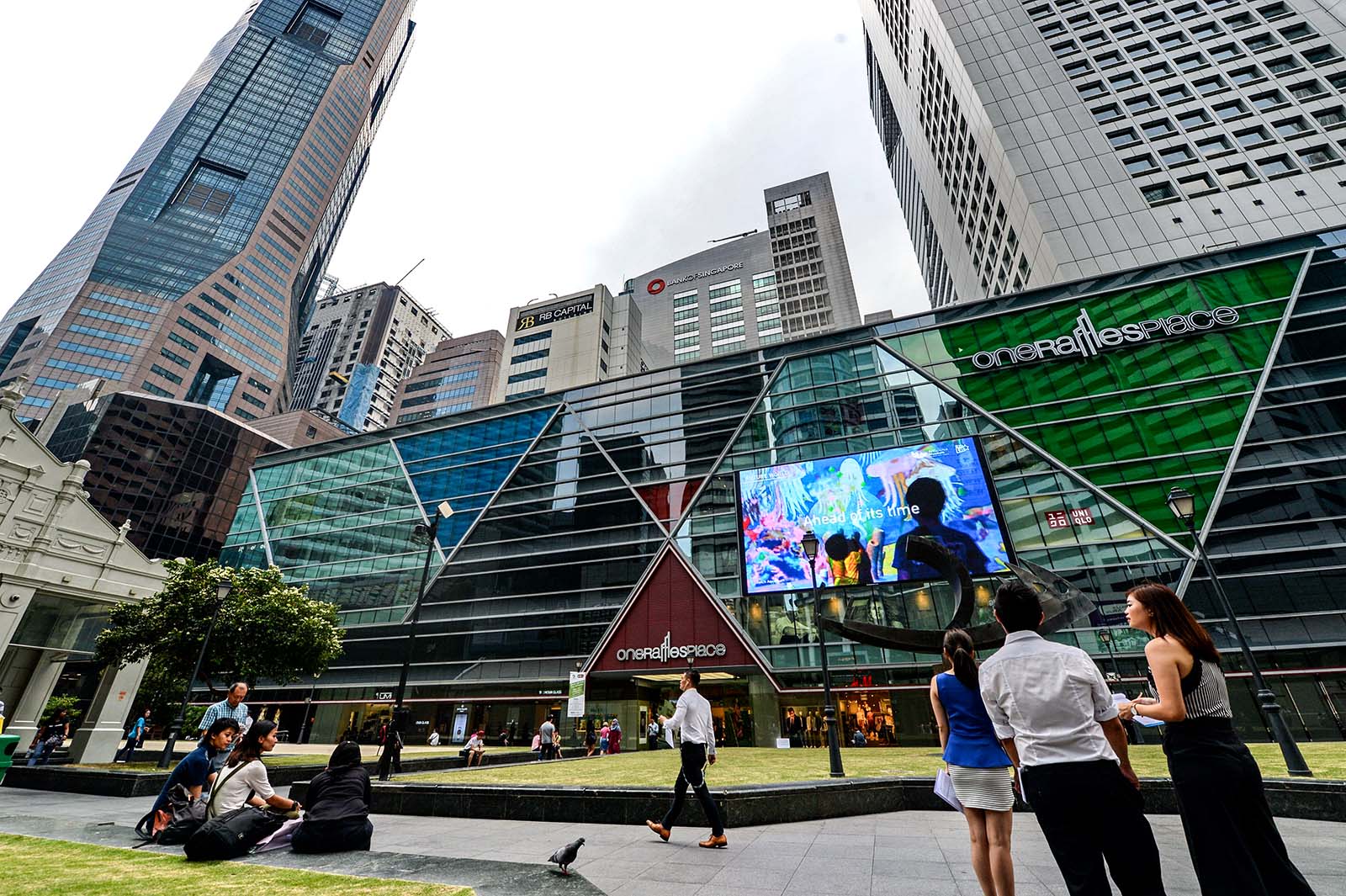As Technology Spreads Through the Workforce, Are Humans Underrated?

Office workers take a break during lunch hours in Singapore's Central Business District. Only 4 percent of executives in Singapore consider themselves ‘change agile,’ compared with 18 percent globally, new research finds.
Photo: Roslan Rahman/AFP/Getty Images
Elon Musk’s recent comment that “humans are underrated,” in the context of excessive automation at the Tesla plant that resulted in production delays, is emblematic of a profound shift in the narrative around the future of work.
An obsession with automation and AI without a clear vision of how it augments the human capability of your talent or enhances the experience for your customers may be less than ideal.
Ping An, a Chinese insurance company, is actively reskilling and redeploying its talent from traditional roles to new roles focused on enhancing the customer experience. The company not only uses AI to expedite claims’ approval cycle time through its Smart Fast Claim platform but also attempts to improve health care delivery using new technologies. Ping An’s Good Doctor app provides reliable and fast diagnostics of common ailments through photos, text or video that link the patient to the doctor via the app.
We are invested in better understanding this human and machine dynamic to be able to help companies navigate the future of work. We find a definite shift from episodic transformation to continuous evolution as organizations recognize that that is the only way to stay ahead of this increasing pace of technological change.
Our 2018 Global Talent Trends Study—Unlocking Growth in the Human Age seeks to understand how this evolution manifests in the talent agenda and the fundamental shift in how we source and deploy talent and rethink the models of talent management—matching right talents for the job to drive empowerment and agility amidst increasing automation.
From the more than 7,600 voices that make up this year’s report, we identified five trends shaping the workforce in 2018. These include “working with purpose,” “permanent flexibility,” “platform for talent,” “digital from the inside out” and “change at speed,” which is the one that stands out in the context of automation.
What Is Changing?
The C-suite respondents in our research believe we are entering a state of permanent transformation—of structures, cultures and people that have regeneration in their DNA. The ability to change, and change at speed, is emerging as a core competency itself. Change agility requires a quickened pace of learning and giving more power to individuals. The challenge is balancing empowerment, governance, and efficiency with reskilling for tomorrow. Half of executives predict at least one in five roles in their organization will cease to exist by 2022, but HR reports mixed confidence in being able to identify jobs that will be displaced and how to effectively and proactively reskill employees. Only 4 percent of the executives in Hong Kong and Singapore, for instance, consider themselves “change agile,” compared with 18 percent of respondents globally.
Mercer Talent Trends Study 2018 Findings: Comparison between Hong Kong and Singapore
Disruption has bifurcated and trifurcated many industries. Within a company, you may have radically different strategies toward heritage businesses versus growth businesses, businesses that are stable today and those that are being incubated for tomorrow. Progressive leaders need to embrace these multispeed environments and understand how to maintain momentum on what might be “traditional” rather than focusing all of the organization’s energy on the new. And they can do so by creating a virtuous cycle between skill needs, learning access and hands-on development opportunities. This means identifying future needs, offering just-in-time learning, and taking motivation drivers into account when filling roles. Employees who demonstrate an eagerness to learn are often those who will be able to take on new roles and lead you into the future.
The concept of managing a pipeline of talent is wearing thin; a platform approach offers an aspirational alternative by creating skill demand that aligns with where the business wants to be in the future. Given the heightened focus on innovation and skills development as a result, we find that most HR teams, especially in the emerging economies, recognize the need for a “build” strategy to drive growth.
In Japan, for example, only 25 percent HR leaders are confident in reskilling current employees for new roles, while more than half (55 percent) of HR leaders feel so globally. We will therefore see an increasing number of organizations investing in online learning technologies as a way to raise their collective digital competence.
Building for the Future
It is important to establish that the more technology diffuses into the workplace, the greater the premium on human judgment. And if change at speed is the panacea, technology must be part of the solution. Digitization transforms how organizations build diverse workforces, embrace flexible working, improve teaming, and analyze performance. It can serve as a vehicle for demonstrating investment in people and help them feel akin to customers. Building a workforce for the future requires a vision—organizations have to reimagine work and make it more, not less, human. Yes, I agree with Mr. Musk, “humans are underrated.” And it is time we come together to change that.


